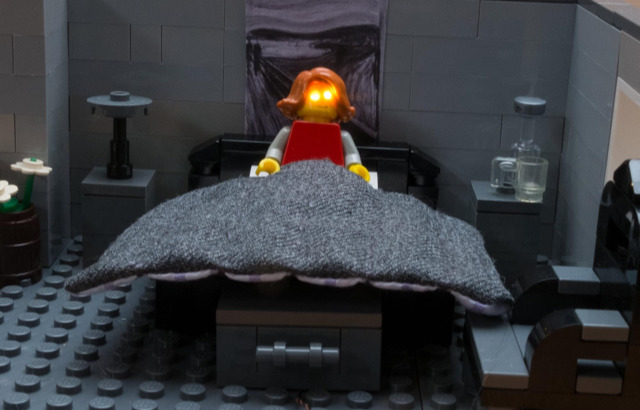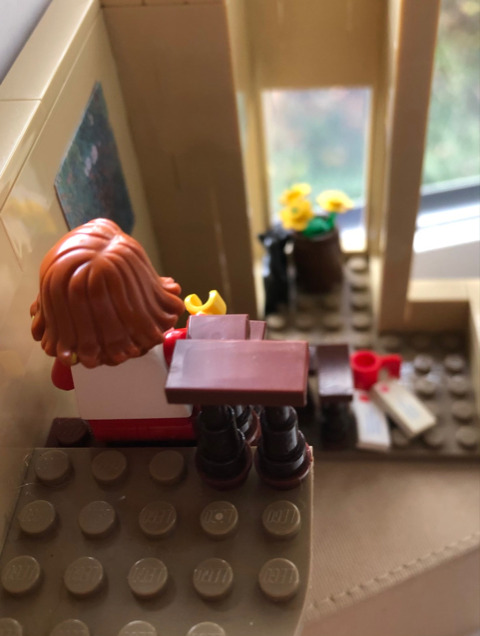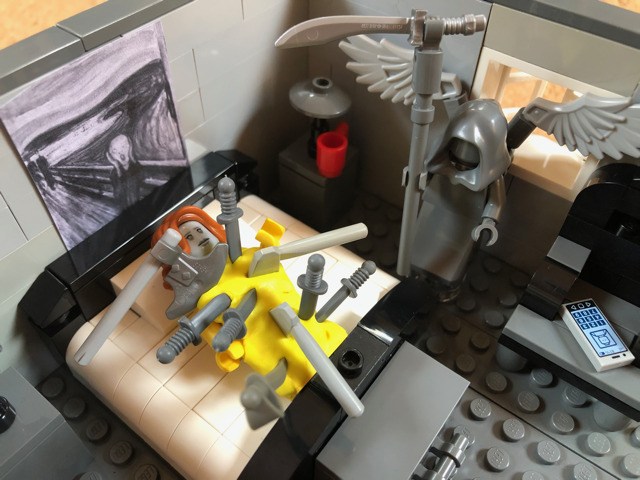Blog by Amali U. Lokugamage and Clare Rayner
We are both senior doctors affected by multi-system long covid symptoms for almost two years now and have resorted to biomedical, humanities, artistic and complementary methods to support rehabilitation and recovery. We used art and poetry and meditation despite illness. These helped us communicate and make sense of our daily experience, bring us into the moment, focus on things we individually found helpful.

When our initial covid symptoms (March 2020) did not disappear within the advised two weeks, we were the first to describe the relapsing remitting nature of symptoms1 in our BMJ blog with colleague Dr Molokhia, a GP also seeing patients with this undulating pattern. In further BMJ blogs we advocated that patient experience narratives2 needed to guide the national response to Long Covid (LC) and described the experience of other doctors affected at the first meeting convened by the WHO on Long Covid as an emerging condition.3 The focus of international and national research/treatments has been biomedical, and the overall evidence base is not strong because research has only just kicked started. However, rehabilitation needs to expand beyond this narrow focus of the biomedical paradigm. This could achieved by listening to those affected to find out what works and what is supportive of a ‘bewildering’ multisystem disorder which is full of uncertainty and complexity. Currently we have noticed a rift between what medical authorities say we should have as treatment; and what affected individuals believe they need. This is a condition where patients wrote the ‘first textbook’ through informal blogs, creating their own virtual support groups, and writing the first patient-led research papers4 despite the power imbalances between patient and institutional providers.5 In this article, we describe the status quo of long covid rehabilitation in the biomedical field but then discuss the value of medical pluralism and utilisation of the arts in navigating the journey of Long Covid recovery as seen through the eyes of patient experience.

As various international groups6, 7, 8, 9, 10, 11 propose initial guidance (usually by consensus) on Long Covid rehabilitation and return to work pathways, we note that we are at an embryonal stage in terms of biomedical evidence. We could, however, apply experience and knowledge of what works in LC from huge cohorts of patients in support groups online, and consider interventions that could be transferred from comparable conditions whilst being wary of over-generalisation.
Graded Exercise Therapy (GET) and Cognitive Behavioural Therapy (CBT) have been removed from the ME/CFS NICE guidelines12 following pressure from patient stakeholders who said that these strategies harm patients. GET’s framework does not recognise post exertional symptoms exacerbation (PESE) and therefore inhibits fruitful rehabilitation and can cause significant relapse in LC. Although there may be overlap between ME/CFS and some individuals with LC, there are also many differences in the pathology of Long Covid. Pacing is enormously important as is managing an individual’s energy envelope.13 Rehabilitation should be individualised, and restorative – titrated to their ‘energy envelope’. Autonomic dysfunction needs to be considered in tailoring rehabilitation14 and neurocognitive impairments may impede engagement with cognitively taxing online information.11 Some patients with Postural Orthostatic Tachycardia Syndrome (PoTS),for instance, may be limited to recumbent or seated rehabilitation for a long time. Neuromuscular dysfunction impeding movement may make it difficult for individuals to attend for face-to-face rehabilitation. We need to recognise that though some individuals may recover within a year, some may take a few years to recover, so long term support15 is needed, not just short packages of care. One size will not fit all.
Despite the removal of GET and CBT as first line interventions in rehabilitation for post viral syndromes that have some overlap with Long Covid, expert (medical) patients have published guidance on management of LC through a Delphi study by Nurek et al,16 which is an excellent resource. Many members of the long covid support groups are using yoga, mindfulness, Tai Chi and acupuncture for their rehabilitation. The 2021 WHO rehabilitation guideline9 mentions these modalities and Salman et al17 too have postulated gentle yoga may help. So, we should be mindful of this holistic and consensus guidance. Whilst the direct biomedical advice of the Long covid Delphi study will be tested through the many studies that have been set up through NIHR (National Institute for Health Research, UK) funding, we should be aware of the pre-existing evidence for the more holistic interventions for cardiopulmonary, pain management and cognitive rehabilitation included in the consensus guidance.
Gentle yoga and pranayama breathing practice was recommended by Salman et al17 in their BMJ paper ‘Returning to physical activity after Covid-19’ as well as Nurek et al16. Indeed, yoga has shown promise as a useful lifestyle intervention that can be incorporated into cardiovascular disease management algorithms.18 Tai chi/ Chi Gung has an evidence base in cardiopulmonary rehabilitation and could potentially be investigated for safe use whilst LC patients await cardiac investigations even if symptomatic.19,20 Both types of intervention are suitable to an online format and helpful not only for musculo skeletal recovery but also to improve emotional resilience in the face of challenge, complexity and uncertainty. The mindfulness component of the above-mentioned interventions helped many members of long covid groups navigate the ebb and flow of fluctuating long covid symptoms. There is some evidence that mindfulness meditation appears to be associated with reductions in proinflammatory processes, increases in cell-mediated defence parameters, and increases in enzyme activity that guards against cell aging, and improvement of cognitive function, all of which could potentially help recovery.21,22 Acupuncture has now been added to the NICE guidelines for chronic pain.23

Holistic LC rehabilitation could also utilise the Arts as demonstrated by the ENO Breathe LC recovery research program, run by the English National Opera and utilises the singing of international lullabies to improve breathing and voice.24 ENO Breathe also incorporate practices derived from mindfulness, yoga breathing (pranayama) and seated Tai Chi/ Chi Gung to inculcate an embodied awareness posture and breath. This has been directly experienced by author AL in her recovery. Furthermore, human musicality and the singing of lullabies may arouse endogenous oxytocin (mothering and social bonding hormone) secretion, and oxytocin is known to have neurobiological homeostatic effects on the limbic system and the immune system.25 The Old Vic theatre has recently launched LC Wellness Project to investigate the benefits of engaging with the drama to support those with Long Covid.26 It may well be that creating works of art could be therapeutic too and patients in the support groups have also been seen to utilise a range of artistic modalities from fine art to Lego sculptures to alleviate their discomforts, express their patient experience and rehabilitate themselves. Though the authors were extremely ill in the first 3 months, we had a daily practice to create art and poetry to dissipate our stress and cope with the discomfort of that experience. These effort have formed into an illustrated book called ‘Within the Pregnant Pause’ which is centred around mindfulness.27
In order to address rehabilitation of the whole human being we need to understand that the current construct of western biomedical healthcare is based on a historical colonial imprint which excluded other ways of healing and recovery from other cultures.28,29,30 So, we need to think fresh and avoid historical discrimination and bias regarding holistic interventions. The arts and humanities as well as medical pluralism have a place at the table for Long Covid rehabilitation strategy and requires investment. Biomedicine alone, is only a small piece of the picture of recovery.
References
[1] Rayner C; Lokugamage AU; Molokhia M. Covid-19: Prolonged and relapsing course of illness has implications for returning workers – The BMJ. BMJ Opinion https://blogs.bmj.com/bmj/2020/06/23/covid-19-prolonged-and-relapsing-course-of-illness-has-implications-for-returning-workers/ (2020).
[2] Lokugamage, AU; Taylor, S; Rayner, C. Patients’ experiences of ‘longcovid’ are missing from the NHS narrative – The BMJ. BMJ https://blogs.bmj.com/bmj/2020/07/10/patients-experiences-of-longcovid-are-missing-from-the-nhs-narrative/ (2020).
[3] Lokugamage AU; Rayner C; Simpson F; Carayon L. We have heard your message about long covid and we will act, says WHO – The BMJ.
[4] Davis, H. E. et al. Characterizing long COVID in an international cohort: 7 months of symptoms and their impact. eClinicalMedicine 38, 101019 (2021).
[5] Lokugamage, A. U., Simpson, F. K. & Chew-Graham, C. A. Patient commentary: How power imbalances in the narratives, research, and publications around long covid can harm patients. BMJ 373, (2021).
[6] World Physiotherapy Response to COVID-19 Briefing Paper 9. SAFE REHABILITATION APPROACHES FOR PEOPLE LIVING WITH LONG COVID: PHYSICAL ACTIVITY AND EXERCISE Acknowledgement. (2021).
[7] Francis, A., Harris, J. & Coleman, J. Rehabilitation for Clients with Post COVID-19 Condition (Long COVID) Guidance for Canadian Rehabilitation and Exercise Professionals. (2021).
[8] Barker-Davies, R. M. et al. The Stanford Hall consensus statement for post-COVID-19 rehabilitation. Br. J. Sports Med. 54, 949–959 (2020).
[9] WHO/Europe. WHO/Europe | Disability and rehabilitation – Support for rehabilitation: self-management after COVID-19-related illness, 2nd ed. https://www.euro.who.int/en/health-topics/Life-stages/disability-and-rehabilitation/publications/support-for-rehabilitation-self-management-after-covid-19-related-illness,-2nd-ed (2021).
[10] NHS. Your COVID Recovery | Supporting your recovery after COVID-19. https://www.yourcovidrecovery.nhs.uk/.
[11] Tabacof, L. et al. Post-acute COVID-19 Syndrome Negatively Impacts Physical Function, Cognitive Function, Health-Related Quality of Life, and Participation. Am. J. Phys. Med. Rehabil. 101, 48 (2022).
[12] NICE. NICE ME/CFS guideline outlines steps for better diagnosis and management | News and features | News | NICE. (2021).
[13] Royal College of Occupational Therapists. How to conserve your energy – RCOT. https://www.rcot.co.uk/conserving-energy.
[14] Dani, M. et al. Autonomic dysfunction in ‘long COVID’: rationale, physiology and management strategies. Clin. Med. (Northfield. Il). 21, e63–e67 (2021).
[15] Rogers-Brown, J. S. et al. Outcomes Among Patients Referred to Outpatient Rehabilitation Clinics After COVID-19 diagnosis — United States, January 2020–March 2021. MMWR. Morb. Mortal. Wkly. Rep. 70, (2021).
[16] Nurek, M. et al. Recommendations for the recognition, diagnosis, and management of long COVID: a Delphi study. Br. J. Gen. Pract. 71, e815 (2021).
[17] Salman, D. et al. Returning to physical activity after covid-19. BMJ 372, m4721 (2021).
[18] Guddeti, R. R., Dang, G., Williams, M. A. & Alla, V. M. Role of Yoga in Cardiac Disease and Rehabilitation. Journal of Cardiopulmonary Rehabilitation and Prevention vol. 39 146–152 (2019).
[19] Taylor-Piliae, R. E. & Finley, B. A. Tai Chi exercise for psychological well-being among adults with cardiovascular disease: A systematic review and meta-analysis. European Journal of Cardiovascular Nursing vol. 19 580–591 (2020).
[20] Gendron, L. M. C., Nyberg, A., Saey, D., Maltais, F. & Lacasse, Y. Active mind-body movement therapies as an adjunct to or in comparison with pulmonary rehabilitation for people with chronic obstructive pulmonary disease. Cochrane database Syst. Rev. 10, CD012290 (2018).
[21] Gard, T., Hölzel, B. K. & Lazar, S. W. The potential effects of meditation on age-related cognitive decline: A systematic review. Ann. N. Y. Acad. Sci. 1307, 89–103 (2014).
[22] Black, D. S. & Slavich, G. M. Mindfulness meditation and the immune system: a systematic review of randomized controlled trials. Ann. N. Y. Acad. Sci. 1373, 13–24 (2016).
[23] NICE. NICE recommends range of effective treatments for people with chronic primary pain and calls on healthcare professionals to recognise and treat a person’s pain as valid and unique to them | News and features | News | NICE. https://www.nice.org.uk/news/article/nice-recommends-range-of-effective-treatments-for-people-with-chronic-primary-pain-and-calls-on-healthcare-professionals-to-recognise-and-treat-a-person-s-pain-as-valid-and-unique-to-them (2021).
[24] ENO Breathe. About ENO Breathe | ENO Baylis |English National Opera. https://eno.org/discover-opera/eno-baylis/eno-breathe/ (2020).
[25] Harvey, A. R. Links Between the Neurobiology of Oxytocin and Human Musicality. Front. Hum. Neurosci. 14, 350 (2020).
[26] The Old Vic Theatre. Long COVID Wellness Project | The Old Vic. https://www.oldvictheatre.com/join-in/for-adults/long-covid-wellness-project-2 (2021).
[27] Lokugamage A. Within the Pregnant Pause. (Lulu, 2021).
[28] Lokugamage, A. U., Ahillan, T. & Pathberiya, S. D. C. Decolonising ideas of healing in medical education. J. Med. Ethics 46, 265–272 (2020).
[29] Lokugamage, A. U. et al. Translating Cultural Safety to the UK. J. Med. Ethics (2021) doi:10.1136/MEDETHICS-2020-107017.
[30] Lokugamage, A. U., Wong, S. H. M., Robinson, N. M. A. & Pathberiya, S. D. C. Transformational learning to decolonise global health. Lancet 397, 968–969 (2021).
Amali U Lokugamage: consultant obstetrician and gynaecologist and honorary associate professor
Clare Rayner: consultant occupational physician
The views in this article are our own and do not represent any organisations that we are affiliated to.
Declaration of Interests:
We both have Long Covid. AUL is on the Board of Directors of the International MotherBaby Childbirth Organisation and also a member of a Patient & Public Voice Partners level 3 LC advisory group in NHS England (both roles are voluntary with no financial interests). CR is on the World Health Organisation (WHO) Rehabilitation Guideline Development Group, Member of Society of Occupational Medicine Long Covid Taskforce, Community Representative on the ACT-A (Access to Covid Therapeutics Accelerator) Committee affiliated to WHO, Patient and Public Involvement and Engagement Lead for NIHR ‘LOCOMOTION’ research project.